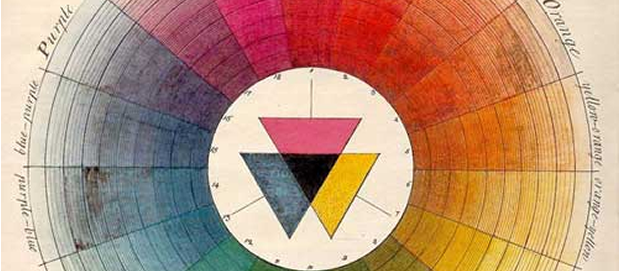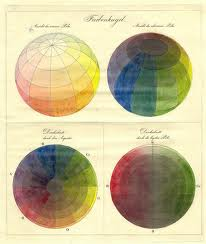Colour history
The history of different colours and what works in period homes

Historical colours by era
When deciding on the colour schemes for your home it may be useful to consider the original colours used during the period when the house was built. The size, layout and features (fireplaces, mouldings etc) of your home may suggest a particular style of decoration but there’s plenty of room to mix periods and styles. Whether you have a period home, or not, carefully choosing the furnishings and colours you use will allow you to echo the tone of any era.
Georgian: (1714 to 1837) – During the early Georgian years colours used in wealthy homes included sage green, burgundy, olive and orange. Since these are vivid colours they were amongst the most expensive and a more modest home would have been more likely to have been decorated in paler colours such as stones, greys, creams and whites. As the century went on colours became lighter and included colours such as sky blue, dusky pink and pea green. A Georgian property with generously proportioned rooms allows the flexibility of darker or lighter shades, use of panelling as well as elaborate plaster work. The key design style elements were harmony and symmetry, airiness, space and light, pale colour schemes and woodwork and delicate furniture.

Victorian: (1837-1901) – The Victorians are known for their ornamentation, dark colours and busy patterns. They used a mix of styles and were also keen on the realistic representation of flowers, birds and animals. Common interior colours include ruby reds, forest greens, browns and dark greys with dark coloured woodwork. The use of purple and blue became more common by the middle of the century as chemical processes developed. Victorian properties often include original features such as woodwork, elaborate tiling and ornate fireplaces. A modern owner can either make the rest of the rooms neutral to make original features the focus or go for a full on Victorian style and paint woodwork dark and paper walls in highly patterned, richly coloured papers.
Edwardian: (1901-1910) – After the elaborate and dark interiors of the Victorian period the Edwardians fancied something lighter – pale pastel colours became more popular with a lighter more feminine feel to houses. Colours used include greys, lilacs and pale yellows and walls were often papered rather than painted. Woodwork was usually painted white. Edwardian houses usually have fewer and larger rooms meaning that they are often very versatile and can be decorated in period colours, or in brighter bolder colours.
The 1920s: After the end of the First World War interiors became simpler in terms of the use of classic clean lines and strong streamlined shapes. From the middle of the decade Art Deco began to be the strong style influence. Initially Art Deco decoration included rounded floral and foliage patterns becoming more abstract and geometric and angular in style. Art Deco decor was glamorous and sophisticated contrasting with the other major stylistic movement favoured at the time – the Arts and Craft movement, which rejected mass produced items in favour of craftsman made simple design. Silver, black, chrome and black and white are common colours for a 1920s theme although rooms were more commonly decorated with a black or very dark background used with paler colours.
The 1930s: During the early 1930s Art Deco was at its peak and homes built in the modernist style with clean, streamlined shapes, a lack of colour and little ornamentation. However the most popular style of house built was the half-timbered mock-Tudor style, influenced by the Arts and Crafts movement. Interior colours were either subtle colours such as pale pinks, beiges, blues and greens or the bolder Art Deco colours of red, black and silver.
The 40s and 50s: The years after the end of the Second World War saw a housing boom as houses were built to replace those lost in bombing. Houses were often smaller than those built prior to 1914 so furniture was often moveable or multifunctional. The optimisitic post-war spirit led to a demand for bright design-led interiors with bold coloured and printed textiles. Colours included vivid reds, acid greens and yellows and ice cream shades such as bubblegum pink and pistachio green.
The 60s: During the 60s past styles including art nouveau, Victorian, Edwardian and 1920s styles were drawn upon and interpreted creating a new style. Pop art and space age design became popular and were incorporated into interiors. Colours and patterns were bold (think bright red and purple) and often clashed (combinations such as orange and fuchsia pink were popular). Monochrome black and white schemes were also resurrected in the 60s.
